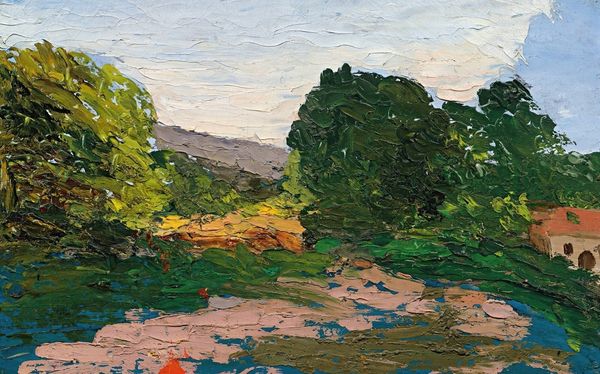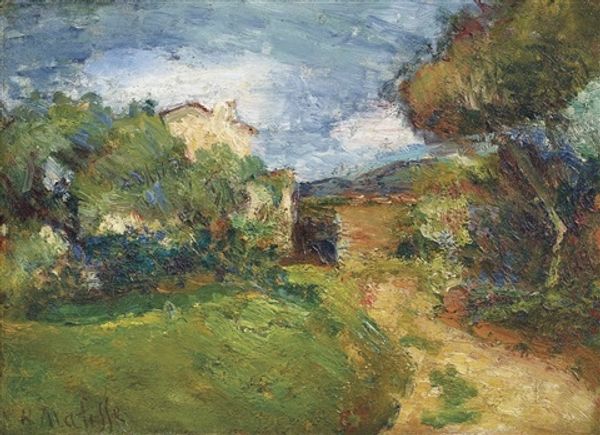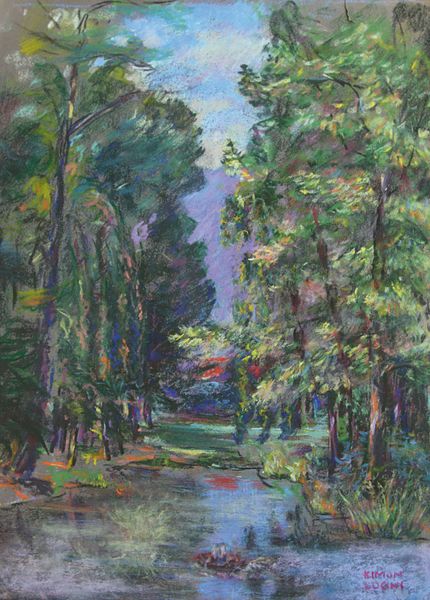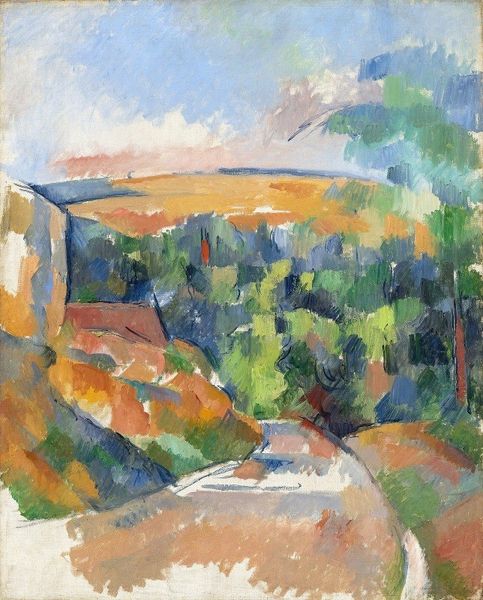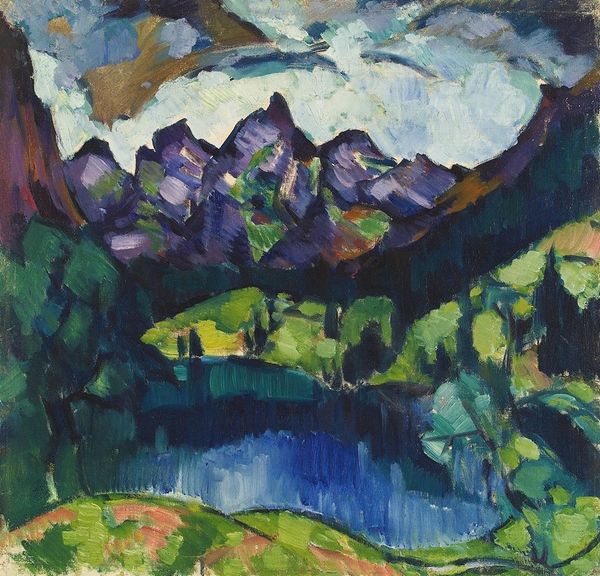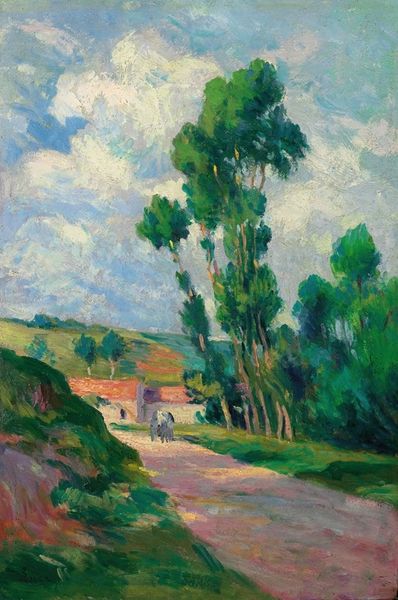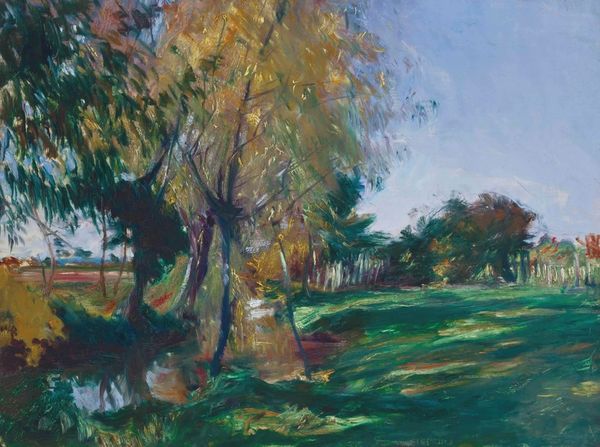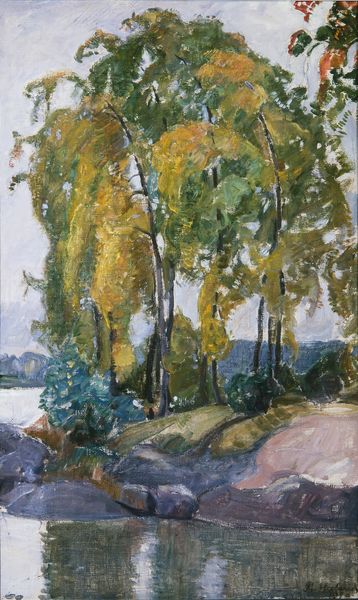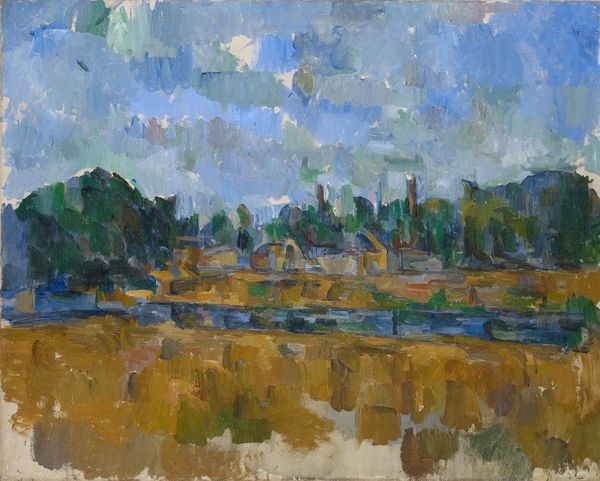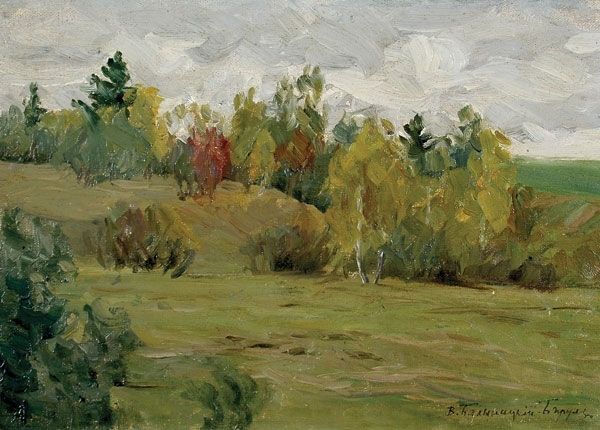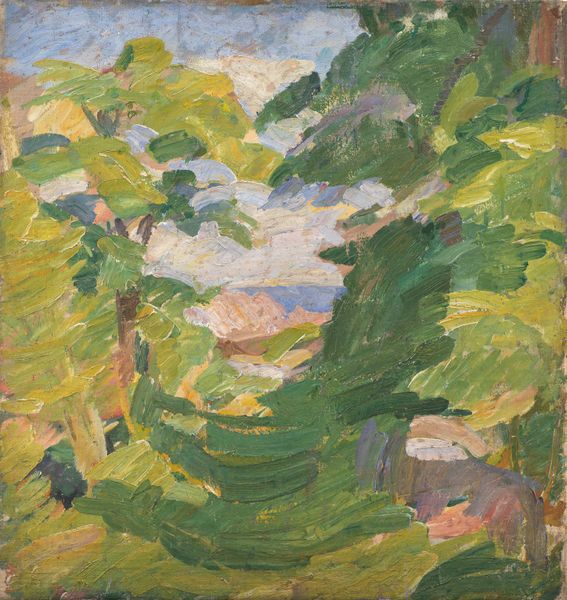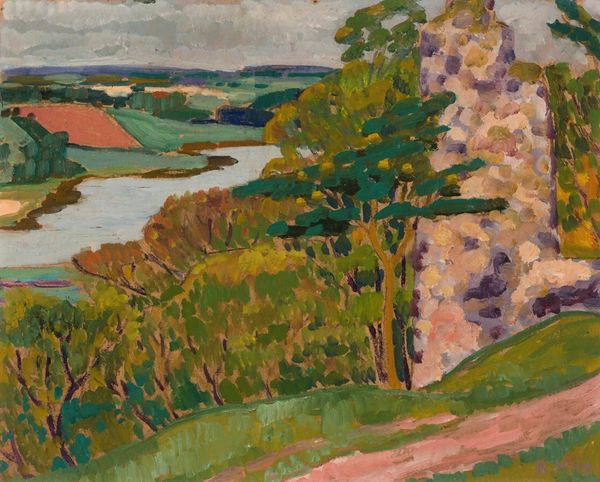
Copyright: Modern Artists: Artvee
Curator: Here we have Henri Matisse's "Paysage," painted in 1898. Editor: My initial impression is one of tranquility, a certain stillness achieved through these deliberate, almost blocky, strokes. Curator: The way he layers the oil paint, creating a palpable sense of depth, speaks to a real concern with the materiality of the work itself. Note, also, how the composition directs your eye. Editor: It's interesting that you say that. The darker mass in the middle-ground is, for me, a protective, perhaps even ominous form that dominates the visual landscape, looming over the bright space. Could that symbolize nature, a space for reflection or, given its shadowy tone, something more weighty? Curator: A compelling reading! I'm more focused on the formal relationships at play. Notice how the green and ochre hues of the foreground contrast against the blues and greys used in the implied structure in the background, or what that might suggest to some is perhaps a building, lending the whole piece a very solid geometric structure. Editor: Speaking of implied structures, there's this horizontal band. What do you see here? I read the bright horizontal plane between the vegetation and the looming form above as the liminal space where consciousness interacts with its environment, like a pathway into introspection. The dark shape in the distance hints at the unknown and subconscious Curator: Introspection might well be the appropriate response but it comes to be through visual contrast and counterpoint – pure elements! The painting oscillates between clarity and obfuscation through nothing other than paint carefully applied in a specific configuration. Editor: I am certain that Matisse carefully used this scene and symbolism, maybe unconsciously. It gives the painting layers beyond just the visual, stirring a primal resonance, making it so much more than an arrangement of oil on canvas. Curator: Yes, though this may arise directly through our apprehension of the painted, material forms. Well, this has given me much to consider, a fruitful debate about what the nature of 'meaning' can even be in visual representation. Editor: Agreed. These conversations illuminate how the personal, even primordial, is always reflected back in every artistic act, despite the maker's intent, maybe even especially when intention seems to be minimal!
Comments
No comments
Be the first to comment and join the conversation on the ultimate creative platform.

